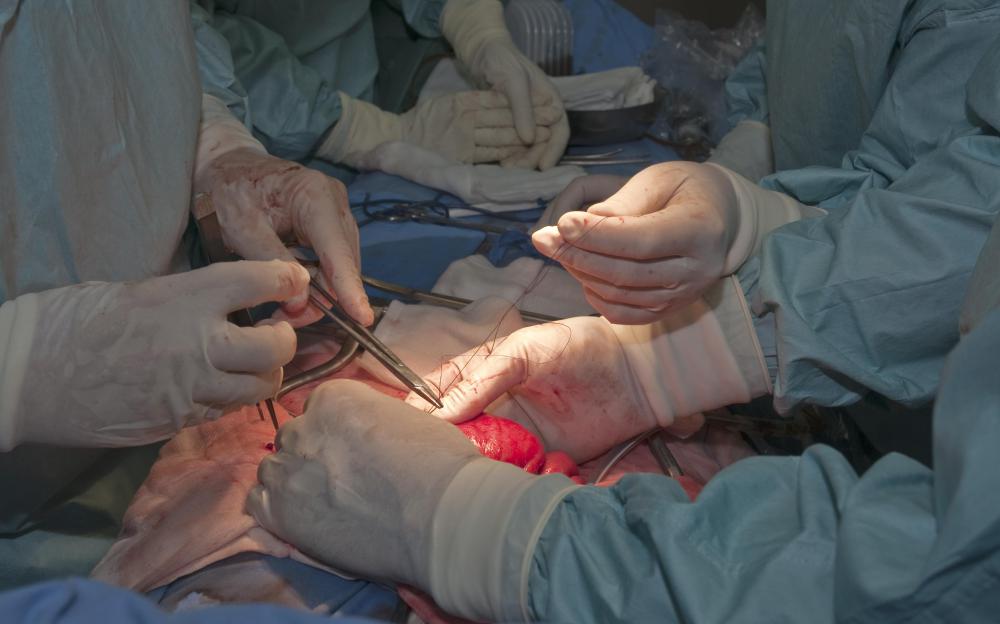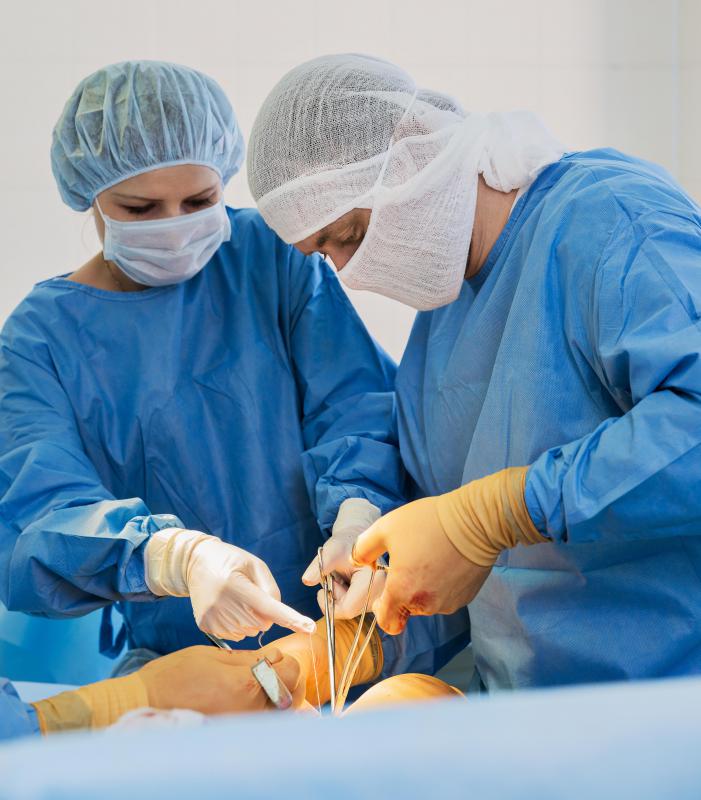At TheHealthBoard, we're committed to delivering accurate, trustworthy information. Our expert-authored content is rigorously fact-checked and sourced from credible authorities. Discover how we uphold the highest standards in providing you with reliable knowledge.
What is a Colon Abscess?
A colon abscess is a complication associated with a condition known as diverticular disease. The localized accumulation of pus associated with an abscess originates in sacs that form in the colonic lining. Treatment is centered on the elimination of the underlying infection and, in some cases, may require the surgical removal of colonic tissue. If left untreated, this type of abscess can be fatal.
Small sacs, known as diverticula, may form as a result of abnormal or intensive pressure being placed on the colon. The development of colonic sacs is a common condition known as diverticulosis, and it usually manifests in mid-to-late adulthood. Individuals who develop this condition may experience a number of signs and symptoms, including abdominal cramping, bloating, and constipation.

There are several tests that may be conducted to confirm a diagnosis of diverticulosis. During an initial physical examination, the healthcare professional may perform an abdominal palpation to check for any distention, tenderness, or other abnormalities. A computerized tomography (CT) scan and ultrasound of the abdominal region may also be conducted to evaluate the condition of the colon and digestive system. Blood tests, including a white blood cell count, may be ordered to check for markers that indicate the presence of infection.

The inflammation and infection of a diverticulum is known as diverticulitis. Individuals whose diverticulosis progresses into diverticulitis may develop nausea, vomiting, and severe abdominal pain. Additional symptoms may include persistent fever, chills, and unintended weight loss. The presence of both diverticulosis and diverticulitis is known as diverticular disease.

Cases of diverticulitis that lead to the infection of colonic tissue may contribute to the formation of a colon abscess. Developing in the wall of the colon, an abscess is a collection of pus that induces inflammation and contributes to the destruction of the affected tissue. Abscesses that are determined to be small in size may respond to antibiotic treatment and require no further medical attention.

An abscess that does not respond to antibiotics may require a procedure known as percutaneous catheter drainage, where a catheter is placed to drain the collected pus and fluid. Using image-guided technology, a physician uses a needle to locate the abscess to correctly position the drainage tube. In some cases, surgery may be necessary to clean out the abscessed area and, if needed, remove damaged tissue. Antibiotic and anti-inflammatory medications may be administered to eliminate any remaining infection and alleviate inflammation.

If the colon abscess becomes perforated, it may leak infected fluid into the abdominal cavity, a condition known as secondary peritonitis. The introduction of pus and fluid into the abdominal region requires emergency surgery to prevent the spread of infection and potentially life-threatening complications. Individuals who develop secondary peritonitis may experience severe abdominal cramping and tenderness, nausea, and vomiting. Additional symptoms may include reduced urination, loss of appetite, and excessive thirst. Complications associated with secondary peritonitis include septic shock and gangrene.
AS FEATURED ON:
AS FEATURED ON:















Discussion Comments
for twenty years I've had a perineal abscess which resulted in me having a stoma but I'm still getting abscesses. what is wrong with me.
Post your comments